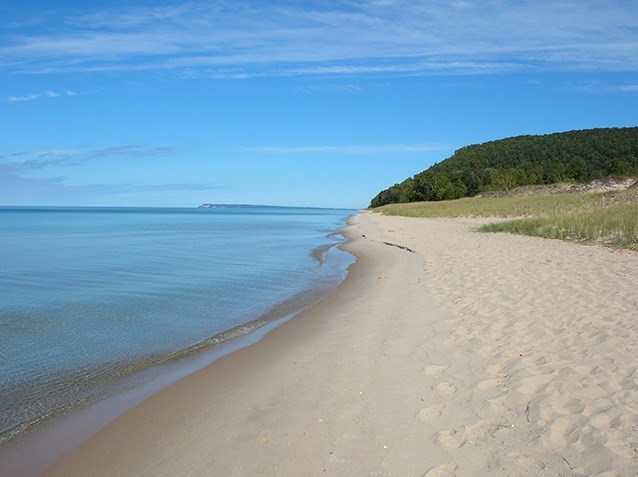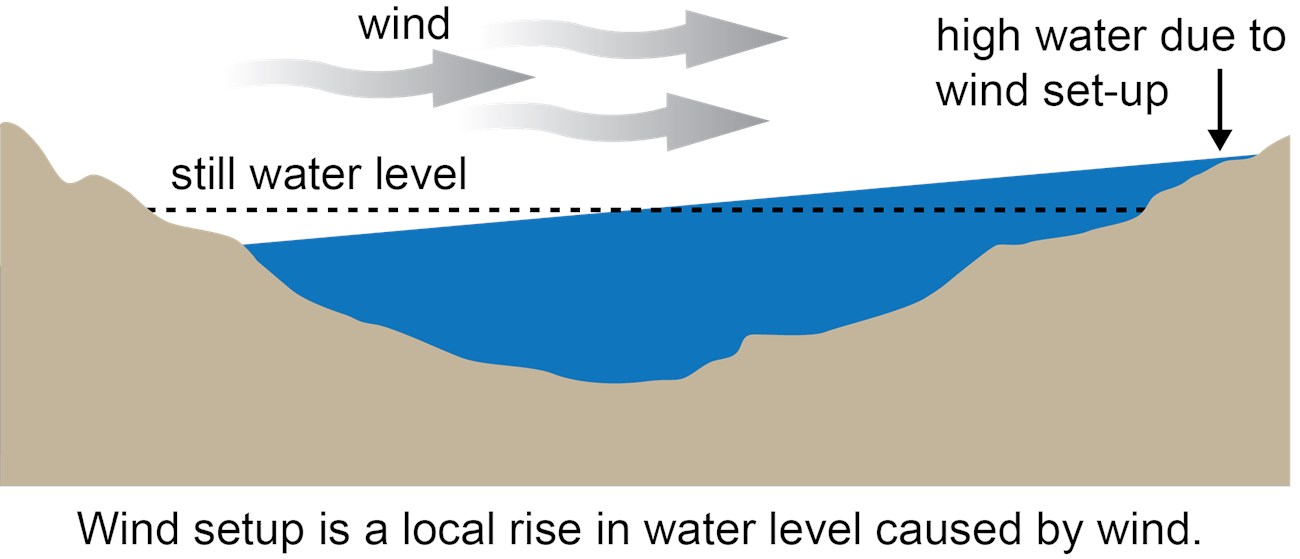Part of a series of articles titled Coastal Geohazards.
Previous: Coastal Geohazards—Nuisance Flooding
Article

A seiche (SAY-sh) is a stationary or standing wave that oscillates back and forth like a pendulum in an enclosed or partially enclosed body of water. Seiches can be produced by:
(Wyckoff 1999).
Seiches in the Great Lakes are typically caused when strong winds and rapid changes in atmospheric pressure pile up water on one end of a lake. When the wind stops, the water returns to the other side of the lake, often causing water levels to rise quite quickly.
Generally a seiche would take about eight hours to cross Lake Superior and come back again, sometimes resulting in changes in nearshore waters as much as three feet or more. However, seiches have been measured in Lake Erie to move up to 8 feet (2.4 m) in height.

Seiches are not limited to lakes and occur in the shallow waters of coastal sounds like Albemarle Sound and Croatan Sound off of Fort Raleigh National Historic Site.
Small seiches are quite common and usually unnoticeable. Larger seiches can resemble storm surges that flood beaches and inundate boat docks. Although potentially hazardous, recent studies show that seiches are an important mechanism for distributing nutrients from deeper water into the sunlit surface levels where they are needed for phytoplankton growth.
Part of a series of articles titled Coastal Geohazards.
Previous: Coastal Geohazards—Nuisance Flooding
Last updated: October 25, 2018